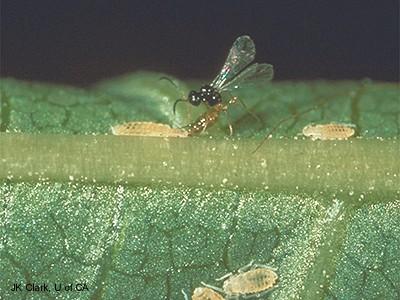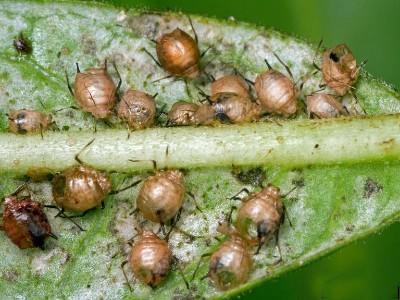-
Aphid parasitoids are very tiny wasps, about 1/10 inch long. They are slender, black or brown, and have a pinched or "wasp waist".
-
They are typically found among aphid colonies. The adult female wasp lays her eggs in aphids. The larva hatches and develops inside the aphid, eventually killing it. The larva is a tiny, white grub.
-
When the larva completes its development, it pupates and turns the aphid body into a "mummy". The mummies are swollen, brown or blackish (Aphelinids leave blackish mummies behind, and Aphidius create tan or golden aphid mummies), and papery in appearance.
-
The adult parasite may chew a hole in the rear of the mummy to escape. Some species of parasites will pupate beneath the aphid.
-
The adults feed on nectar from small flowers such as anise, caraway, dill, parsley, mustards, white clover, etc.

Parasitic wasp laying an egg in an aphid

Parasitized aphids are called "aphid mummies". Photo: David Cappaert, Bugwood.org

